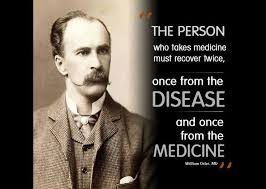Are Hidden Muscle Knots Causing Your Pain? Understanding Myofascial Trigger Points
- Dr Ron Van As
- Jun 9
- 3 min read
Keywords: myofascial trigger points, muscle knots, chronic pain, radiating pain, failed back surgery, trigger point treatment, chiropractic care, LifeWave patches
The Overlooked Source of Chronic Pain
If you’re struggling with radiating pain or have undergone back surgery only to find your symptoms persist, there may be an often-missed cause: Myofascial Trigger Points.
These tight bands of muscle, commonly called "knots," can mimic more serious conditions like herniated discs or sciatica—and they are a frequent cause of failed back surgery outcomes. In this article, we'll break down what trigger points are, what causes them, how they’re treated, and how you can prevent them.

What Are Myofascial Trigger Points?
Myofascial Trigger Points (MTrPs) are hyperirritable spots in your muscles that feel like hard nodules. They’re painful when pressed and often send pain to distant areas of the body—called referred pain.
Common signs of trigger points include:
Deep, aching muscle pain
Restricted range of motion
Pain that travels to other areas (e.g., buttock pain from low back trigger points)
Tenderness or stiffness in the muscles
Trigger Points and “Failed Back Surgery”
Many people who undergo spinal surgeries—like discectomies, laminectomies, or fusions—continue to experience pain after surgery. This condition is often labeled as Failed Back Surgery Syndrome (FBSS).
In many of these cases, trigger points were the real culprit all along. Because they can mimic nerve compression or disc pain, surgery addresses the wrong issue—leaving patients frustrated and still in pain.
What Causes Trigger Points?
Trigger points can develop due to:
Poor posture (especially sitting at desks or using smartphones)
Repetitive movements or overuse (e.g., lifting, typing, driving)
Muscle injuries or trauma
Emotional stress and muscle tension
Nutritional deficiencies (e.g., magnesium, B-complex vitamins)
Dehydration and lack of movement
Even a small muscle strain can, over time, create painful trigger points if not treated early.
How to Treat Myofascial Trigger Points
Thankfully, trigger points can be treated effectively with a combination of therapies:
✅ Manual Therapy
Myofascial release
Deep tissue massage
Chiropractic adjustments with soft tissue work
✅ Dry Needling or Acupuncture
Relieves muscle tightness and reduces pain signals
✅ Movement & Stretching
Gentle stretching and postural correction
Strengthening exercises for weak muscles
✅ Heat or Ultrasound Therapy
Increases circulation and helps muscles relax
✅ Natural Patch Therapy
LifeWave X39® and IceWave® patches can reduce inflammation, promote healing, and relieve pain without drugs or needles.
Can You Prevent Trigger Points?
Yes—most trigger points are preventable with simple lifestyle changes:
Maintain good posture, especially while working or driving
Take frequent movement breaks
Stay hydrated and eat a nutrient-rich diet
Manage stress with mindfulness, breathing, or physical activity
Use ergonomic tools at work and home
You can also use LifeWave patches proactively to support natural healing, reduce inflammation, and keep your energy levels high.
Optimal nutrition is vital for our bodies ability to heal itself. If you are lacking certain vitamins and minerals your body will struggle to reach homeostasis properly.
Final Thoughts
Don’t let hidden muscle knots control your life. Myofascial Trigger Points are a common but often ignored source of chronic pain—and understanding them could save you from unnecessary medications or surgery.
If you're experiencing stubborn pain or recovering from surgery without relief, consider a comprehensive trigger point assessment. You may find that the solution is simpler—and more natural—than you thought.
💡 Ready to Take the Next Step?
Schedule a trigger point evaluation or learn how LifeWave patches and Essential Vitamins and Minerals can support your body's natural healing process—without drugs or invasive procedures.
📧 Or contact me directly at Zambian Chiropractic to learn more.




Comments